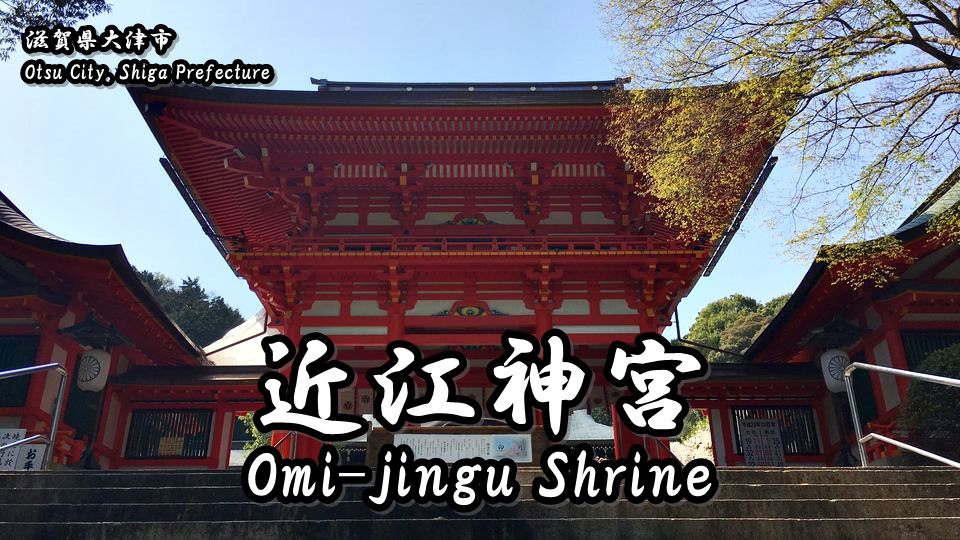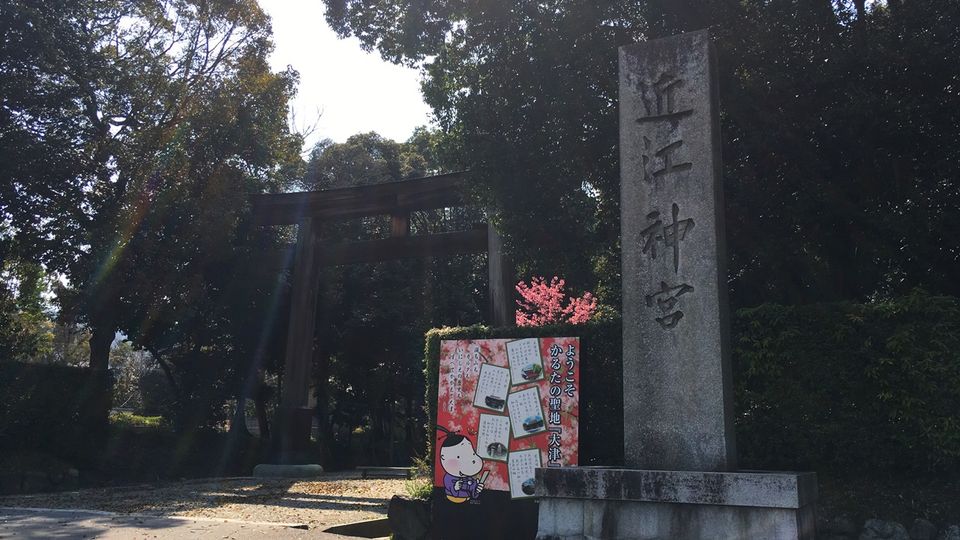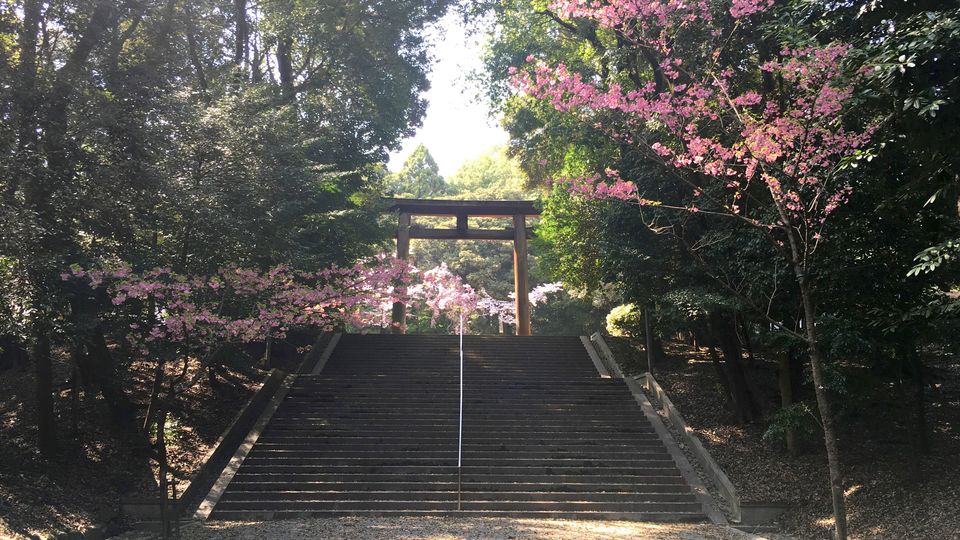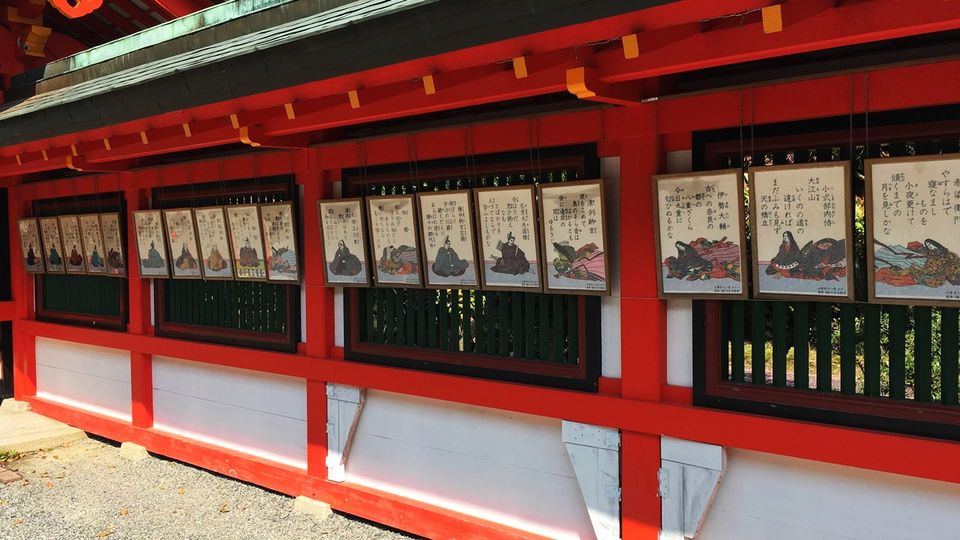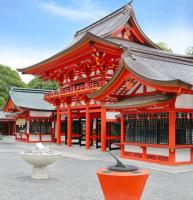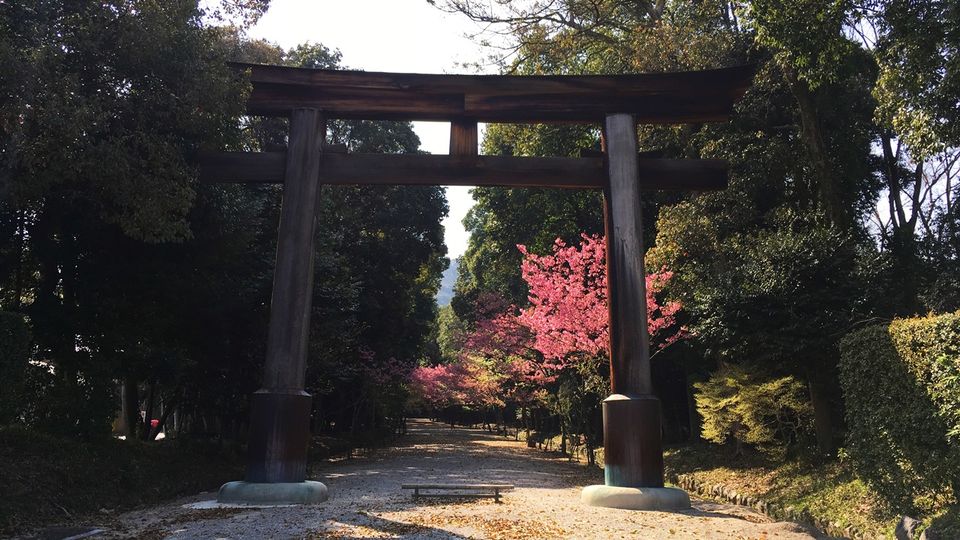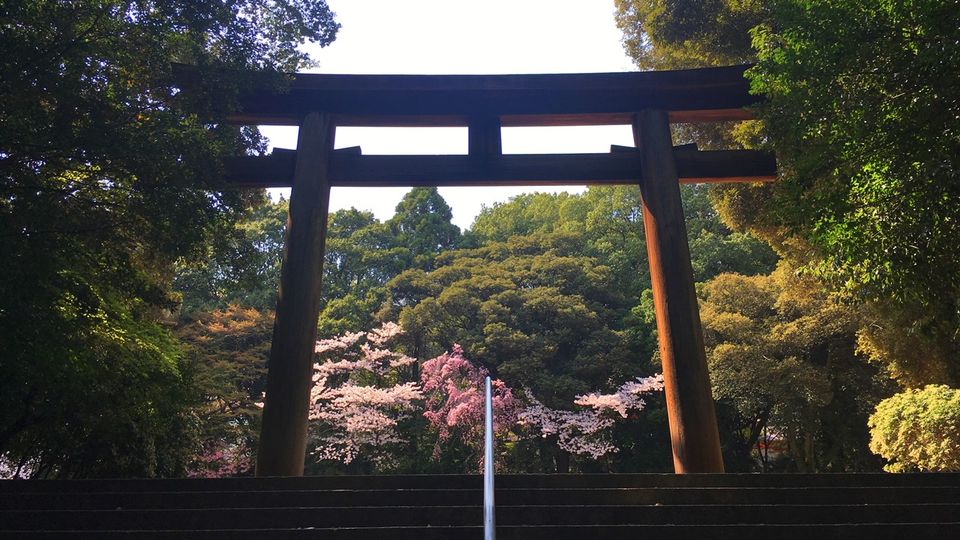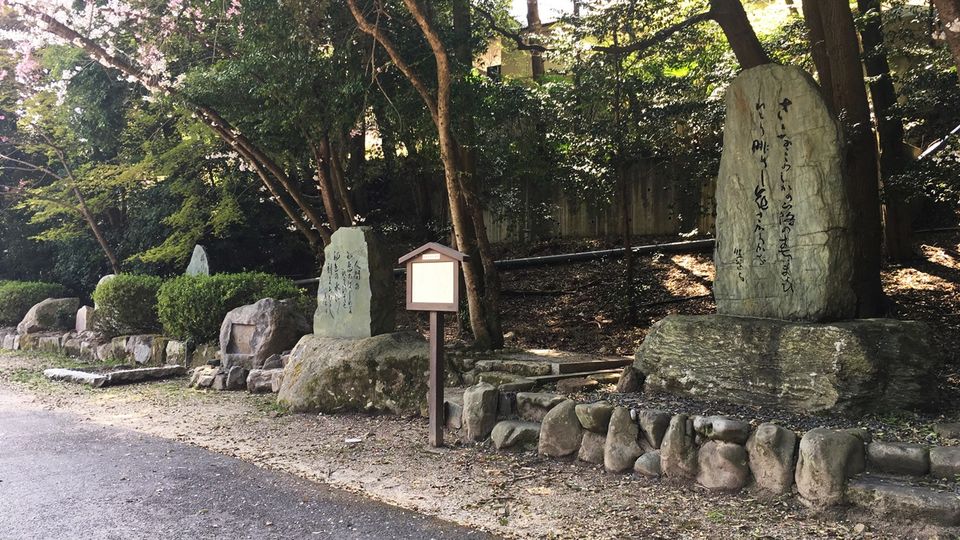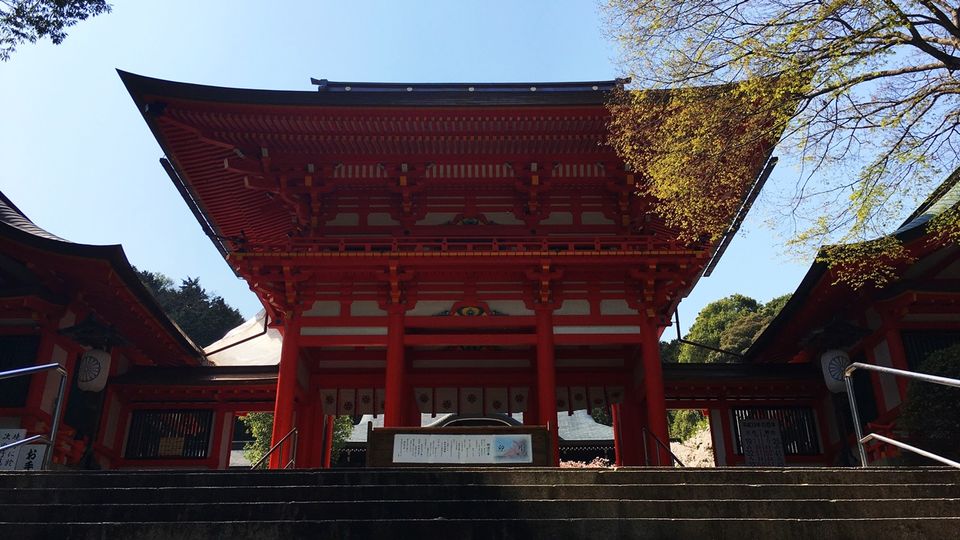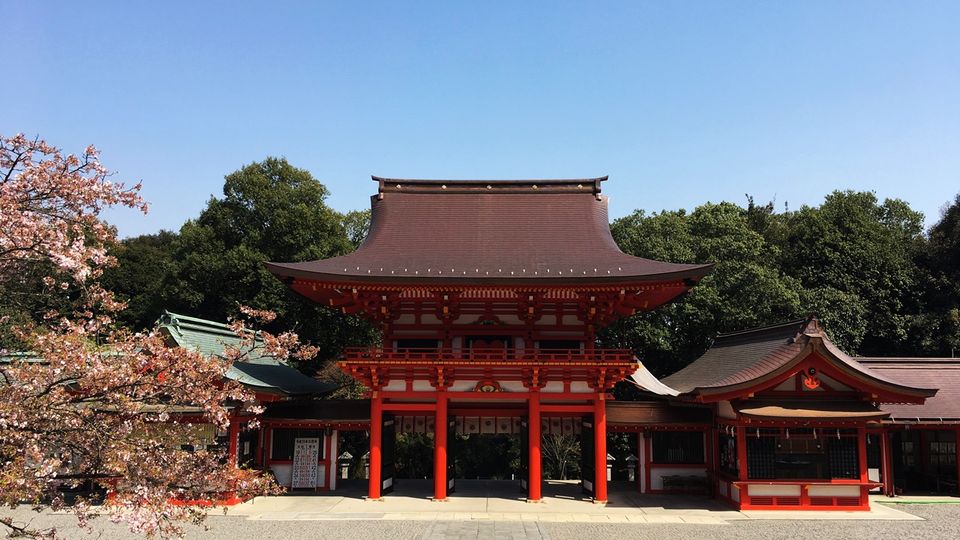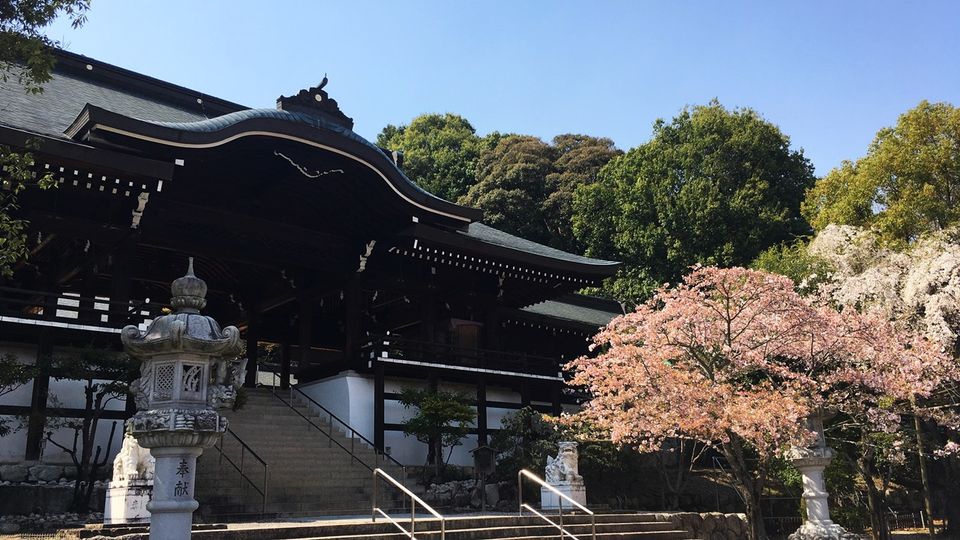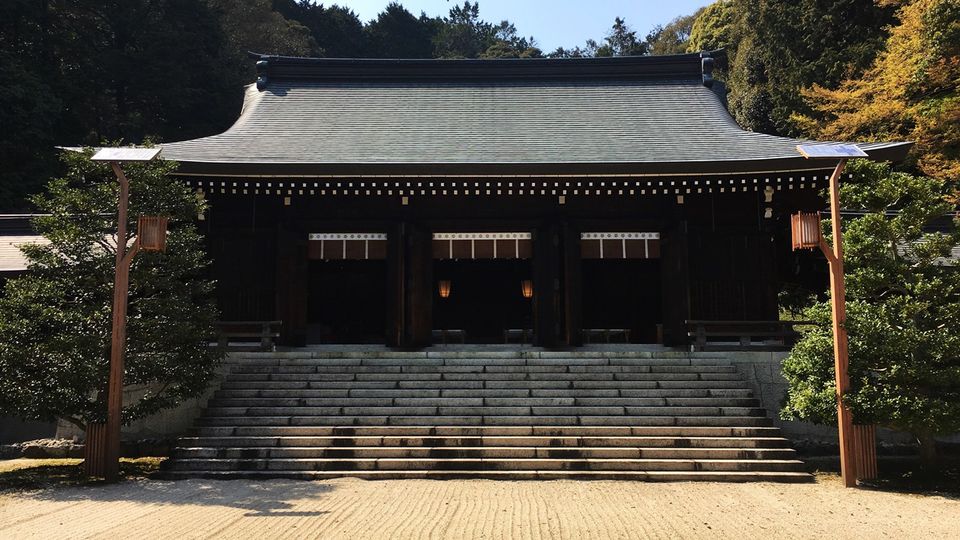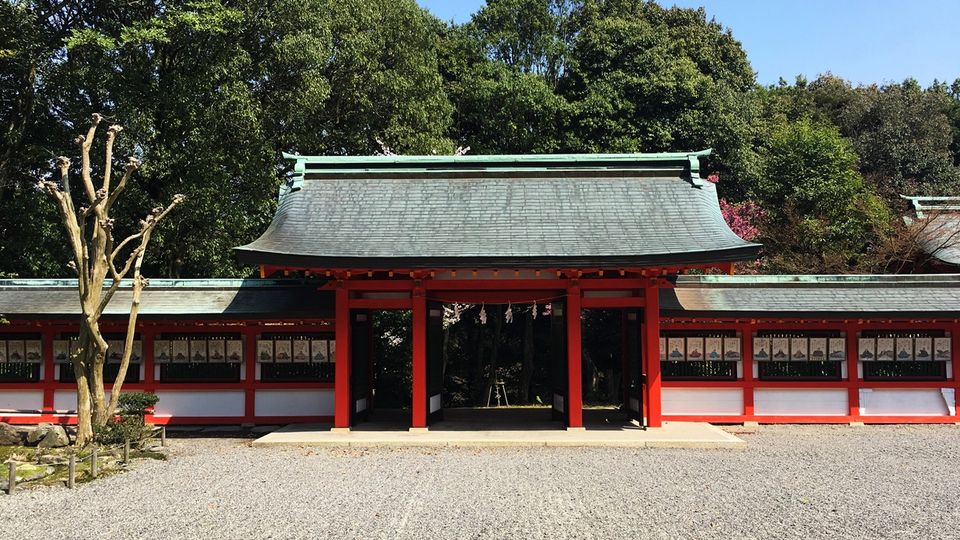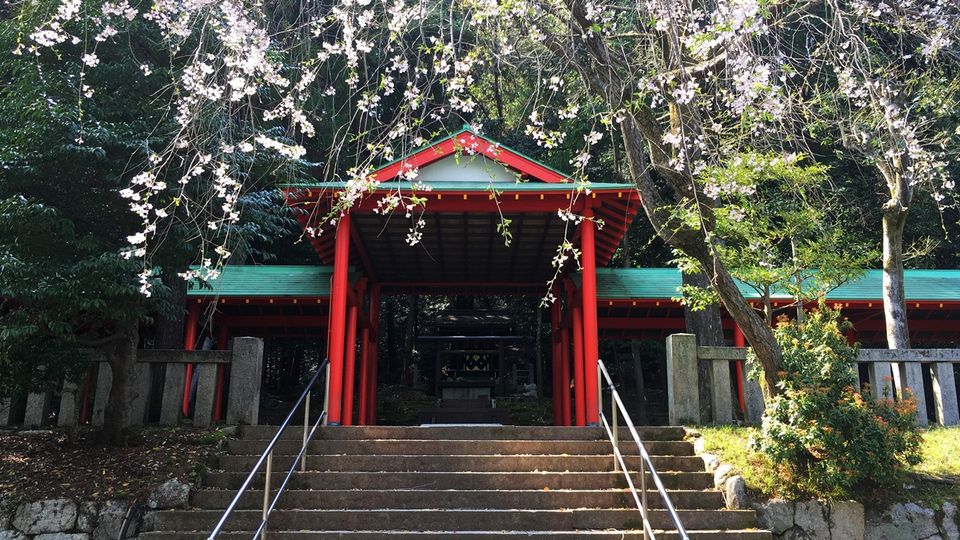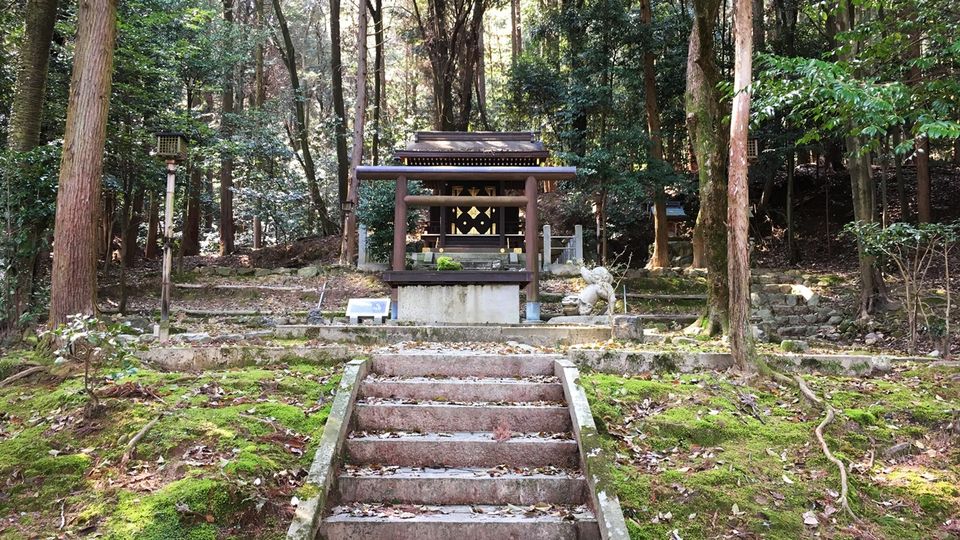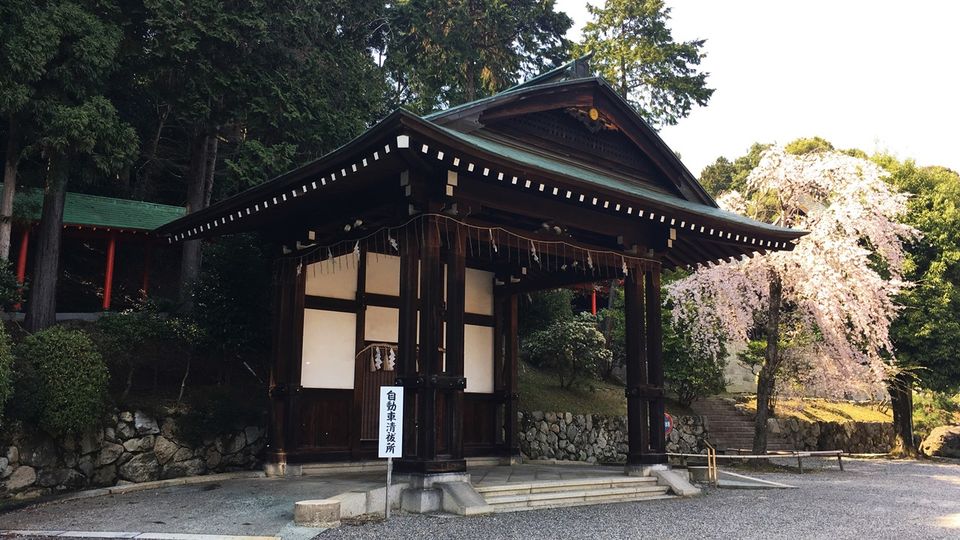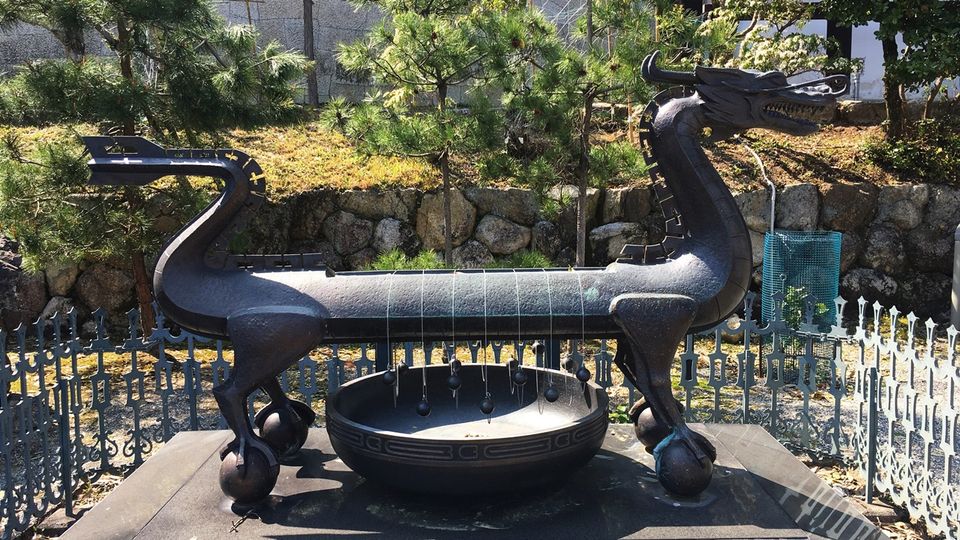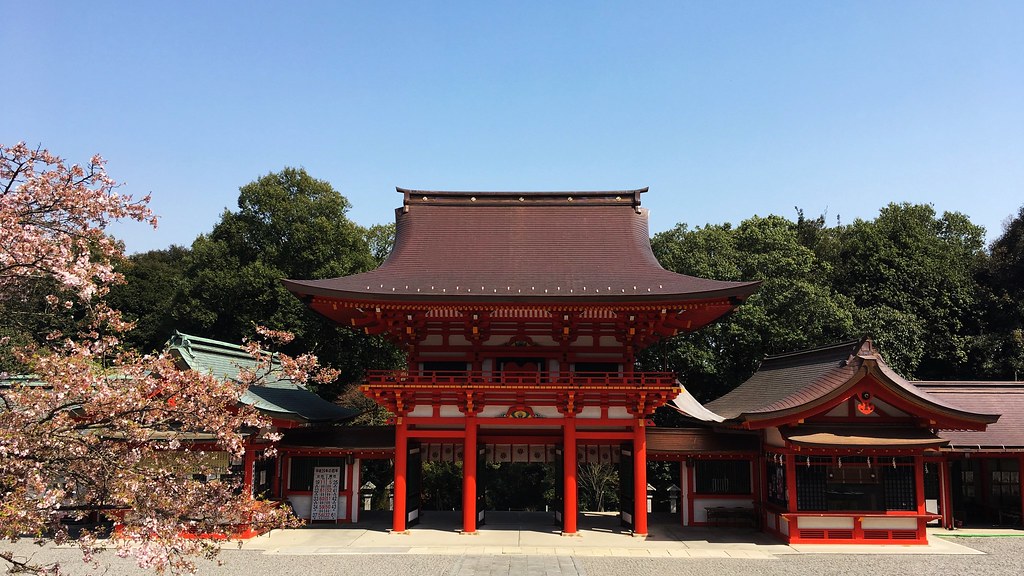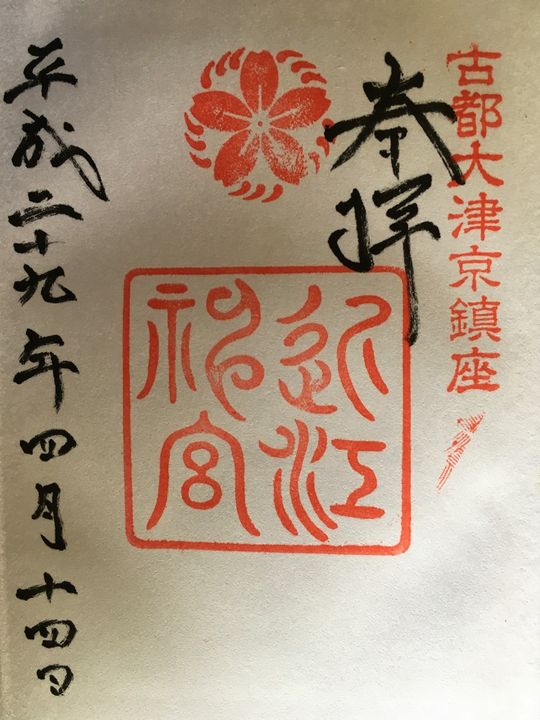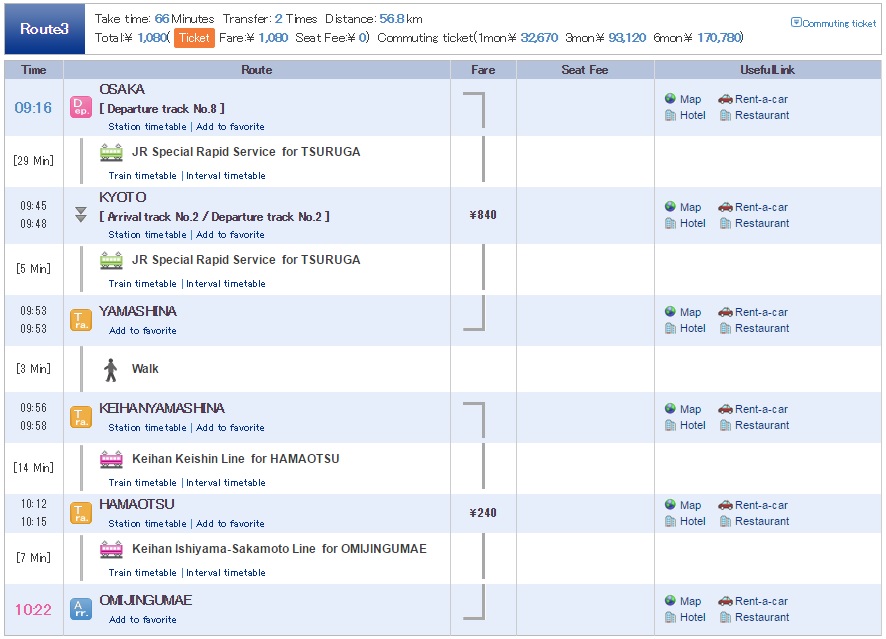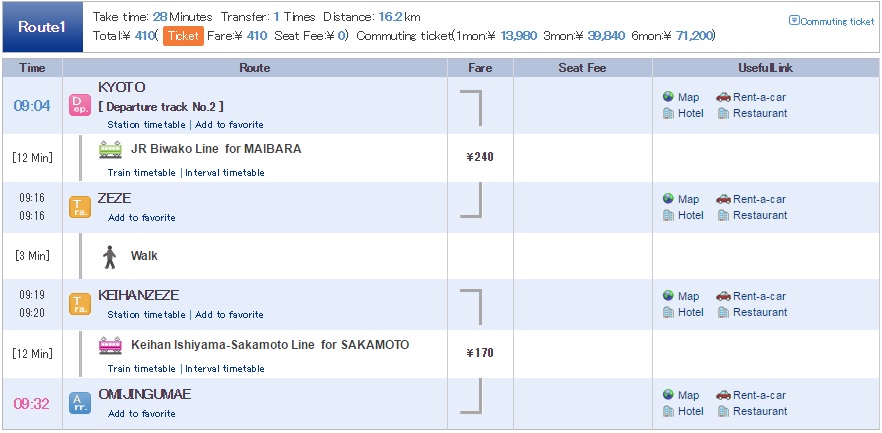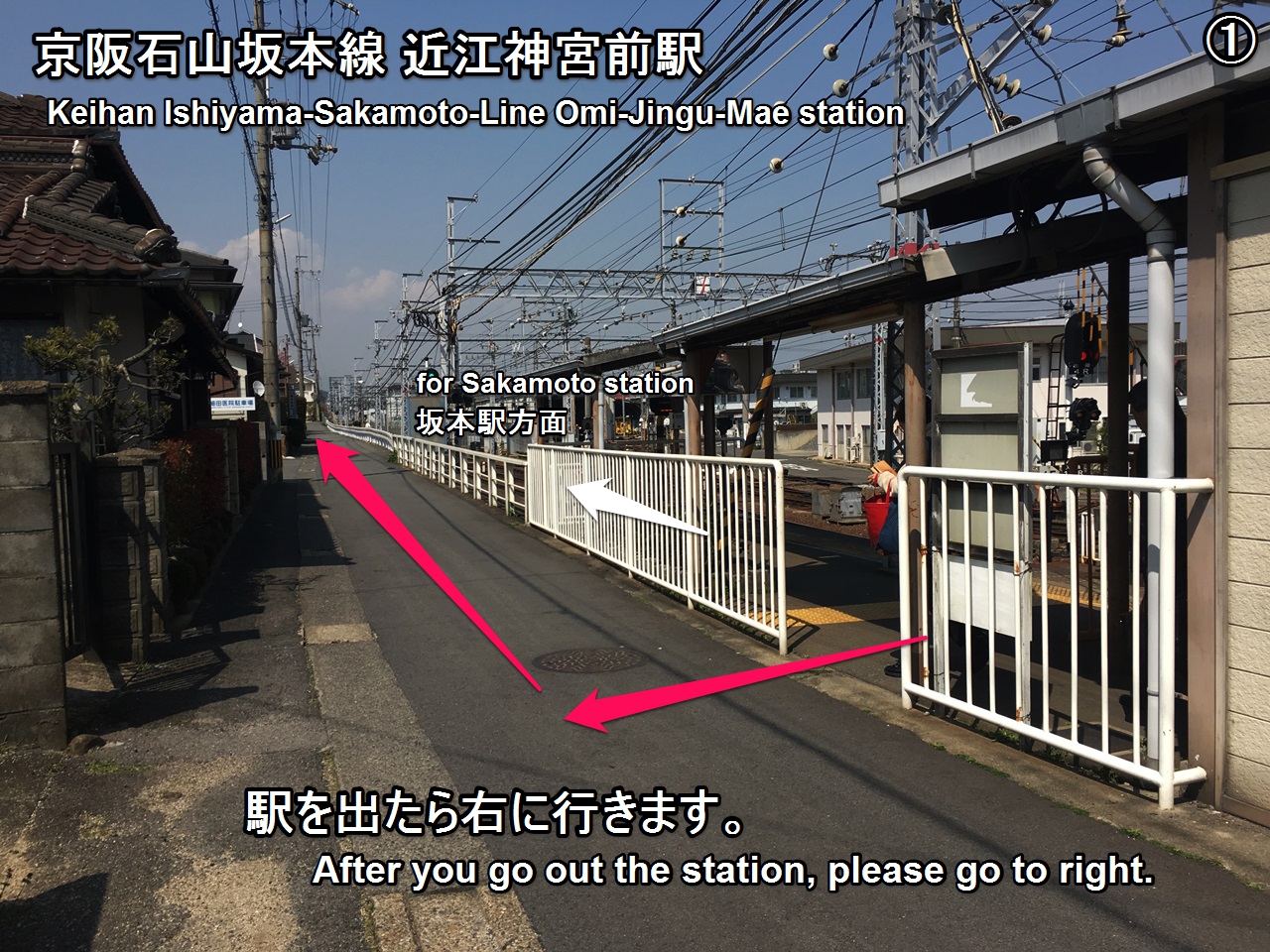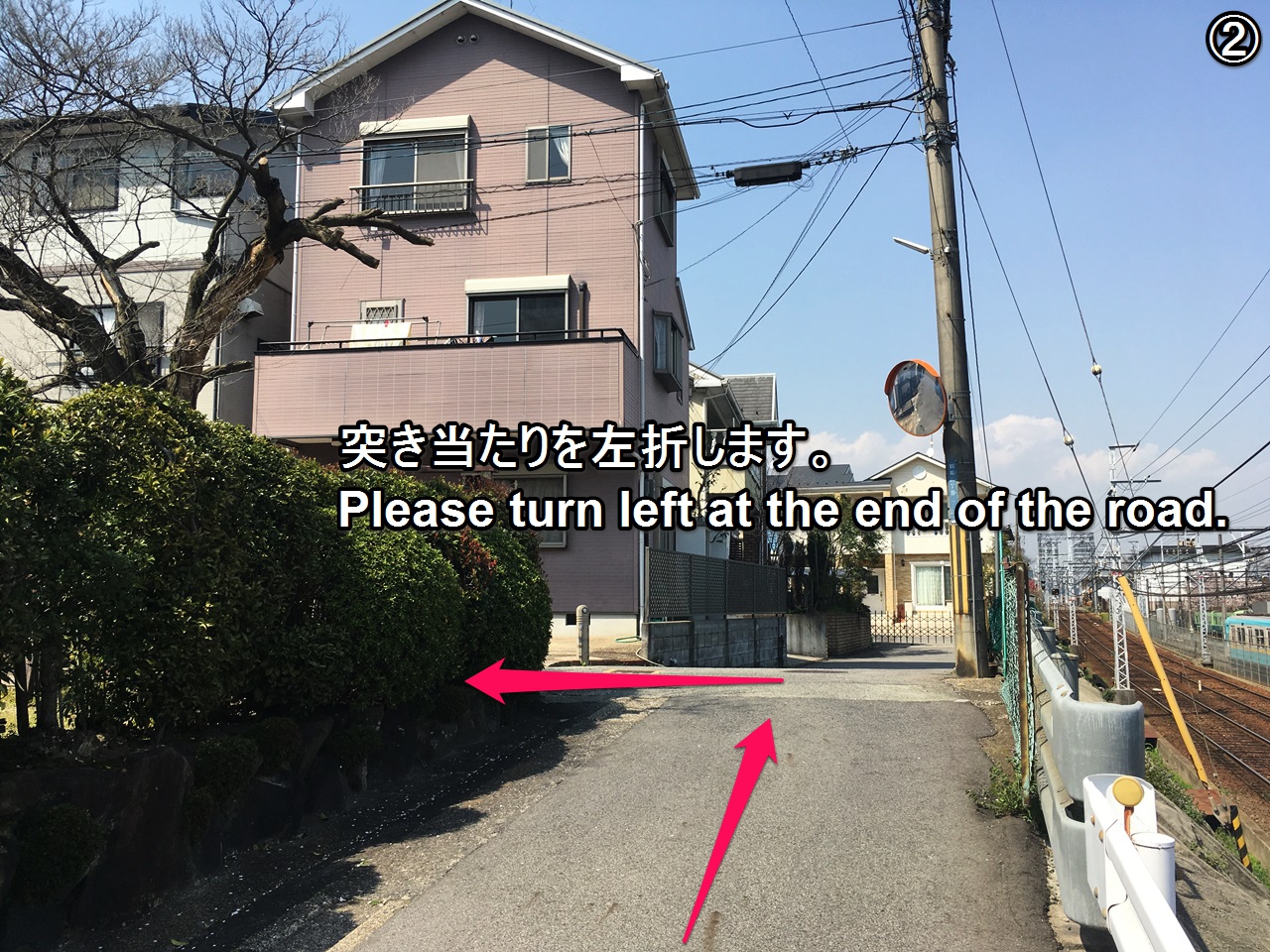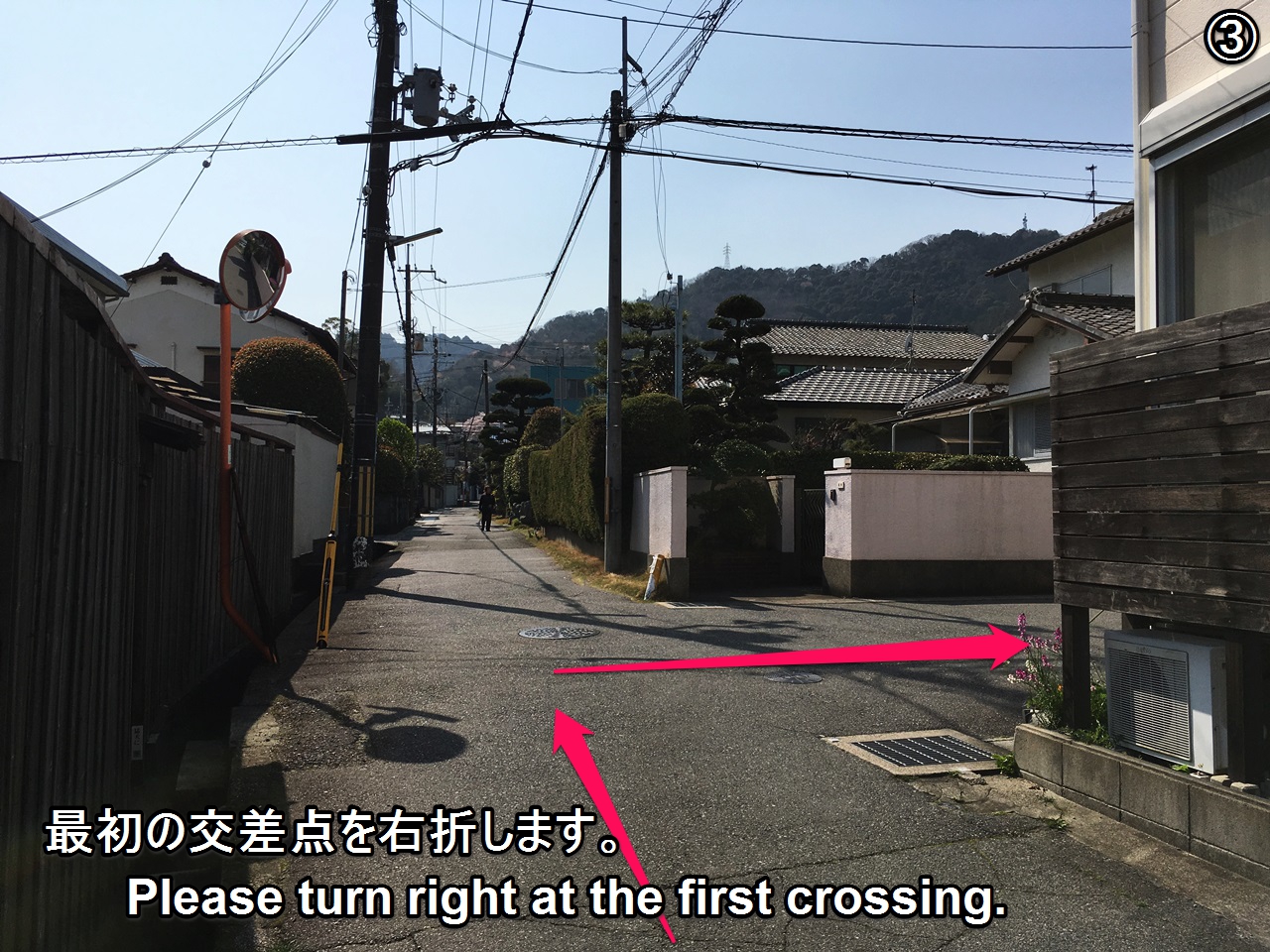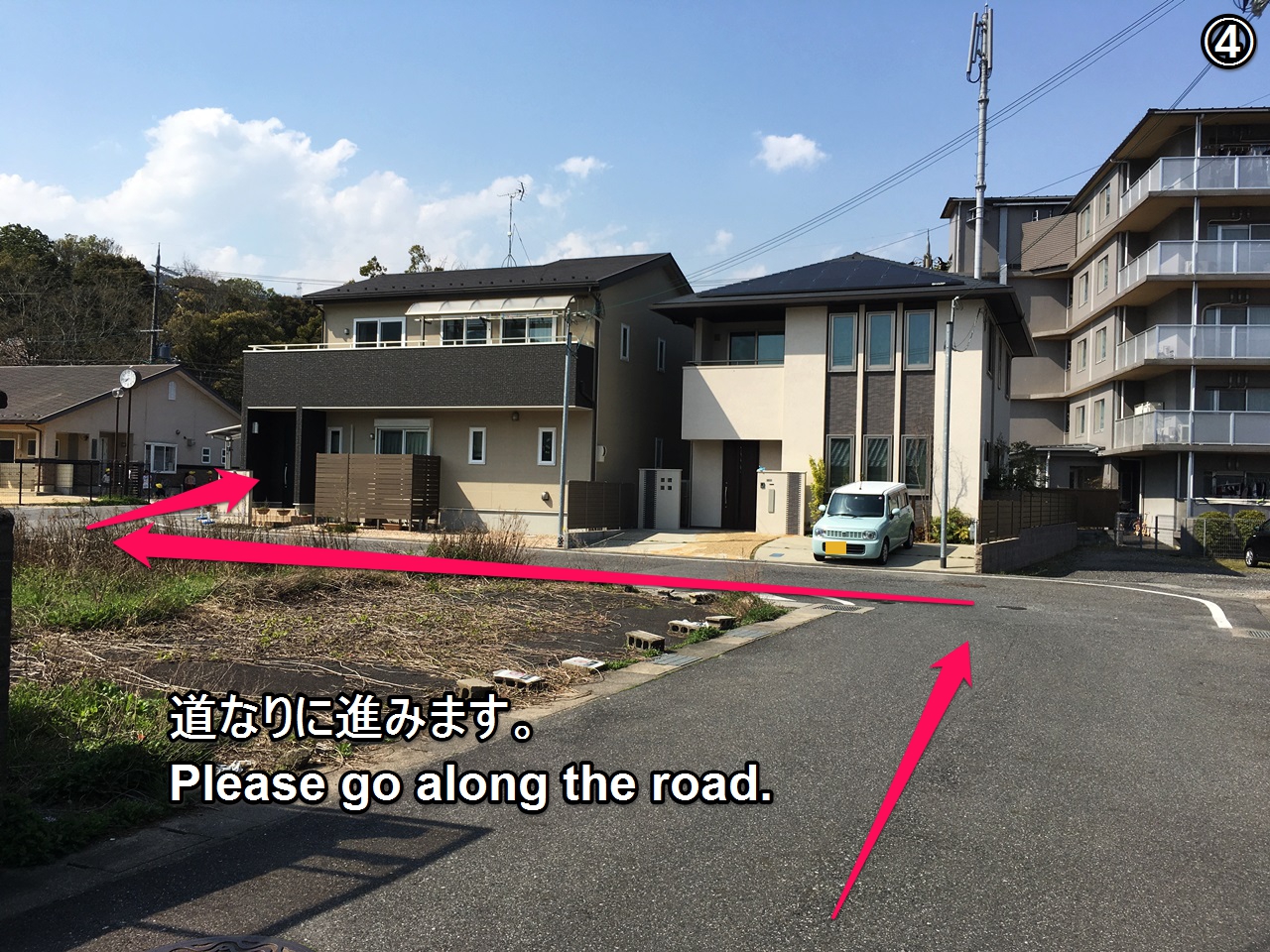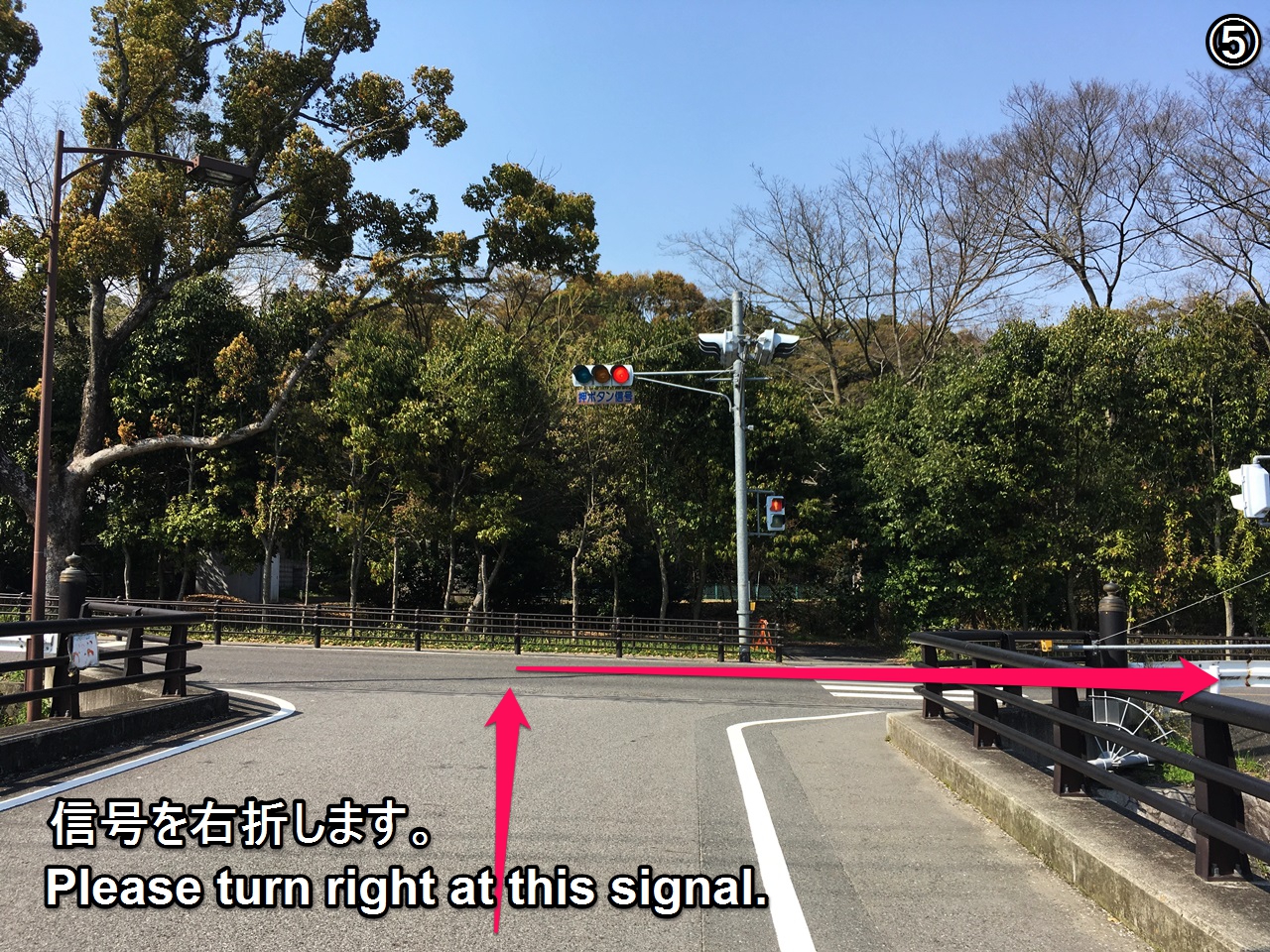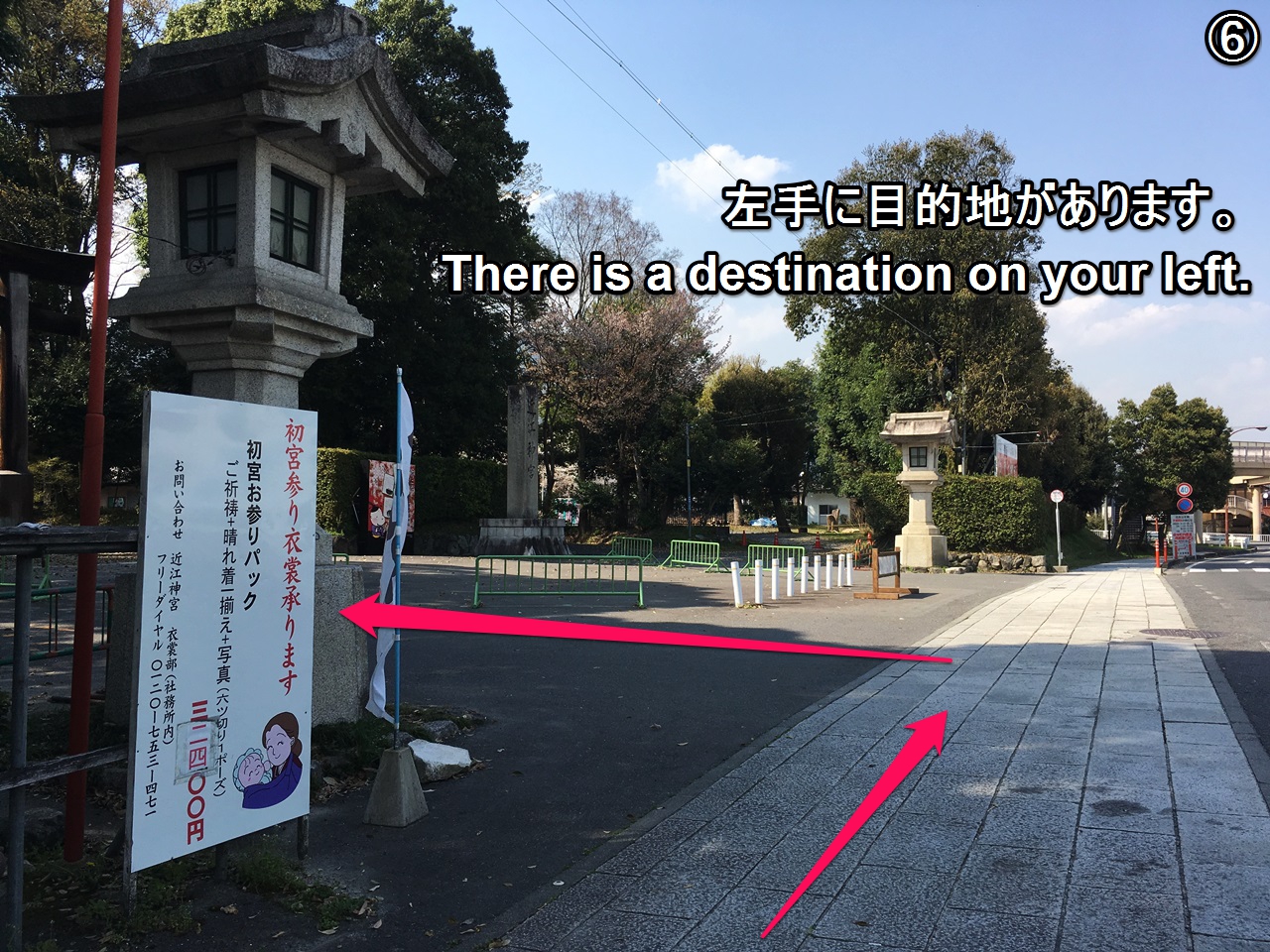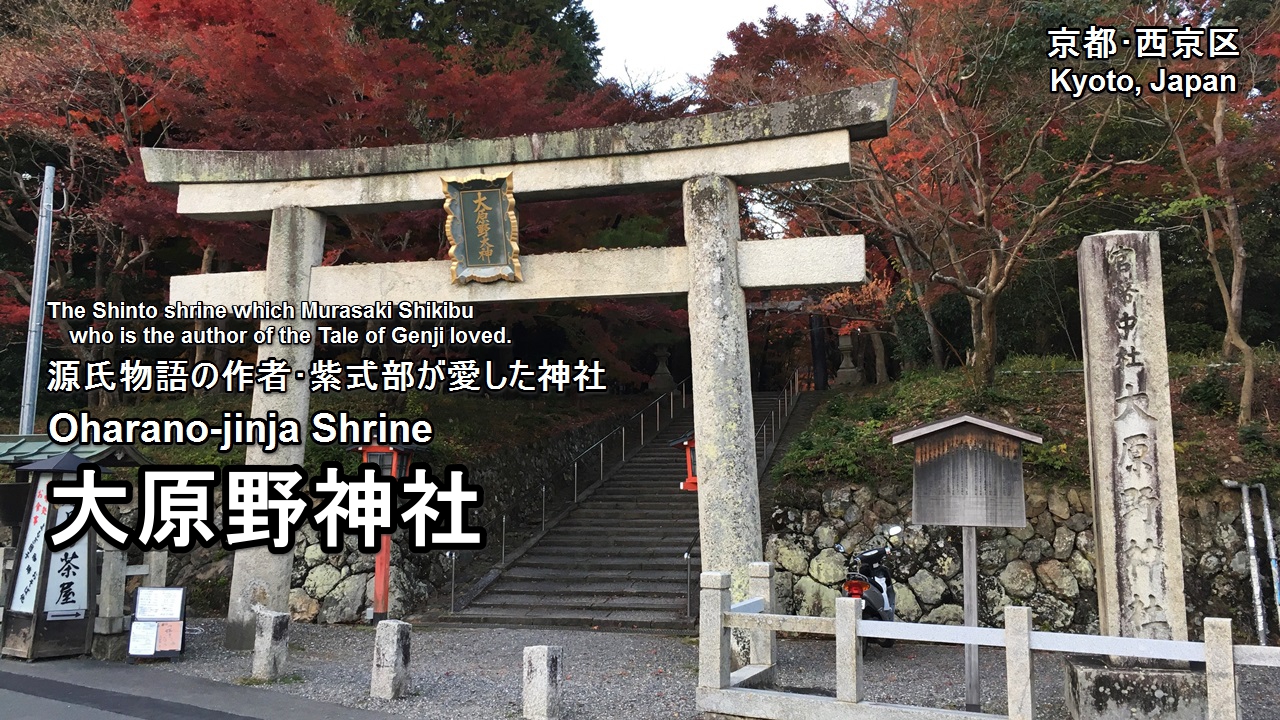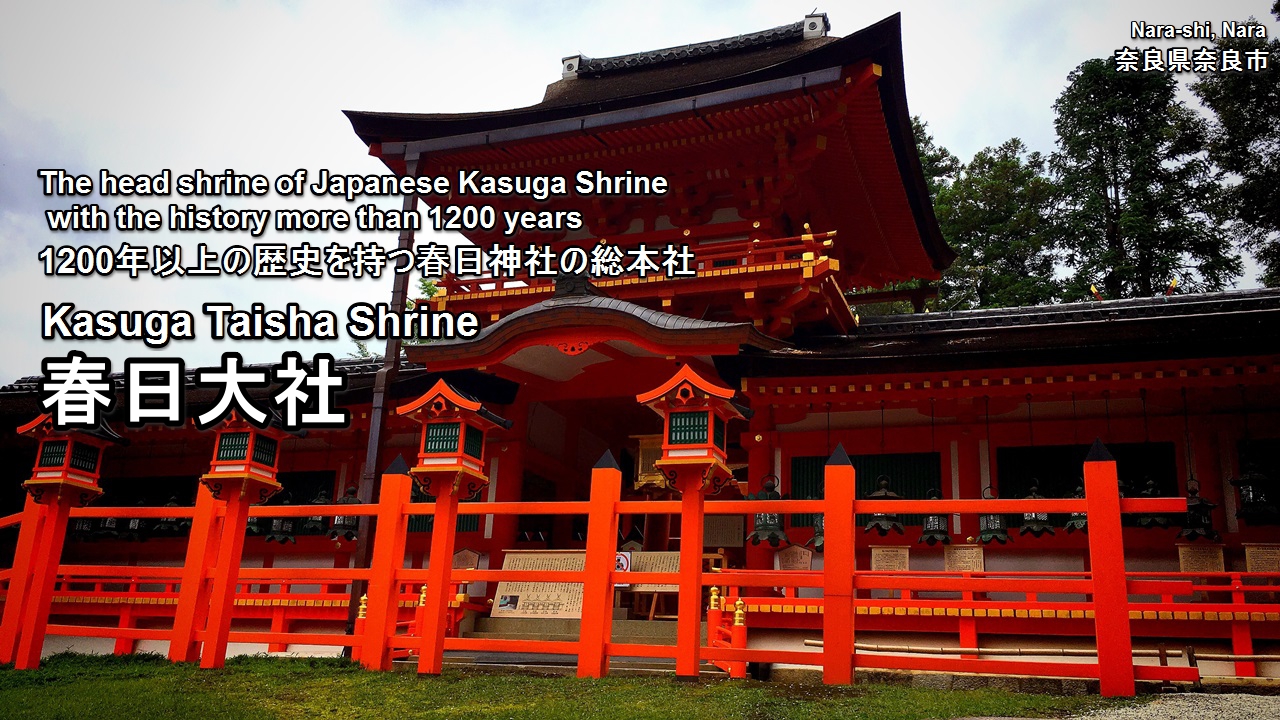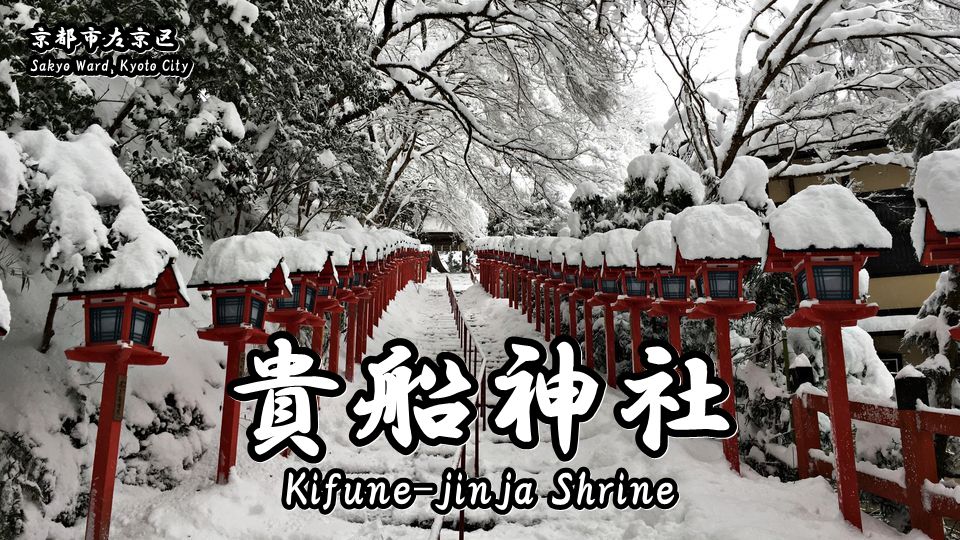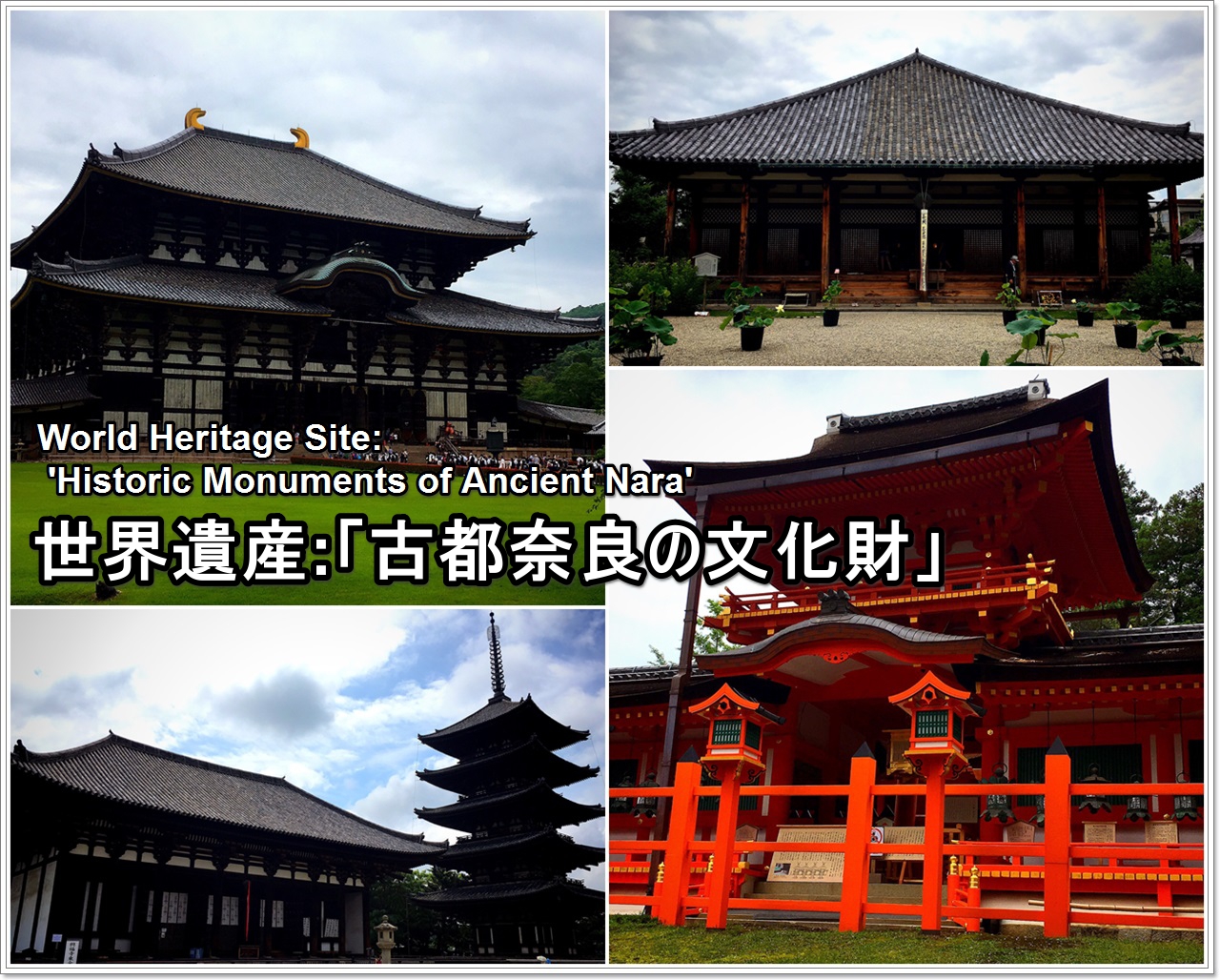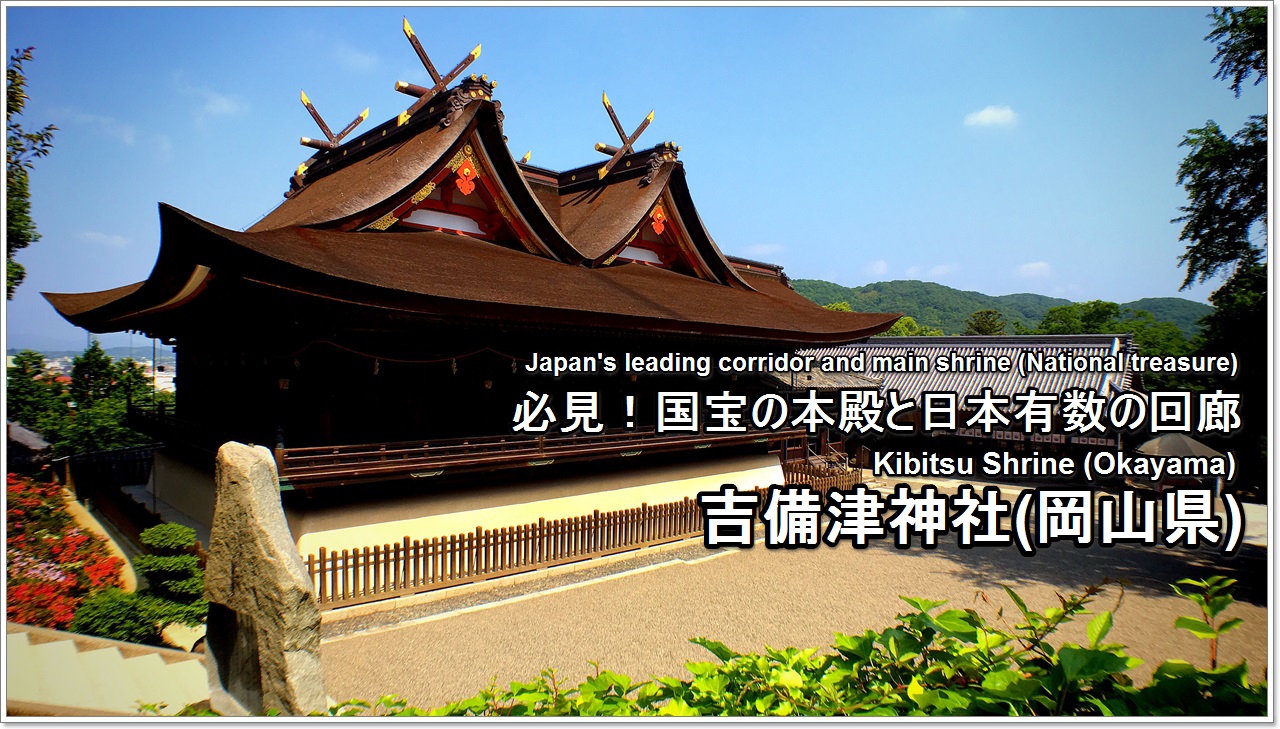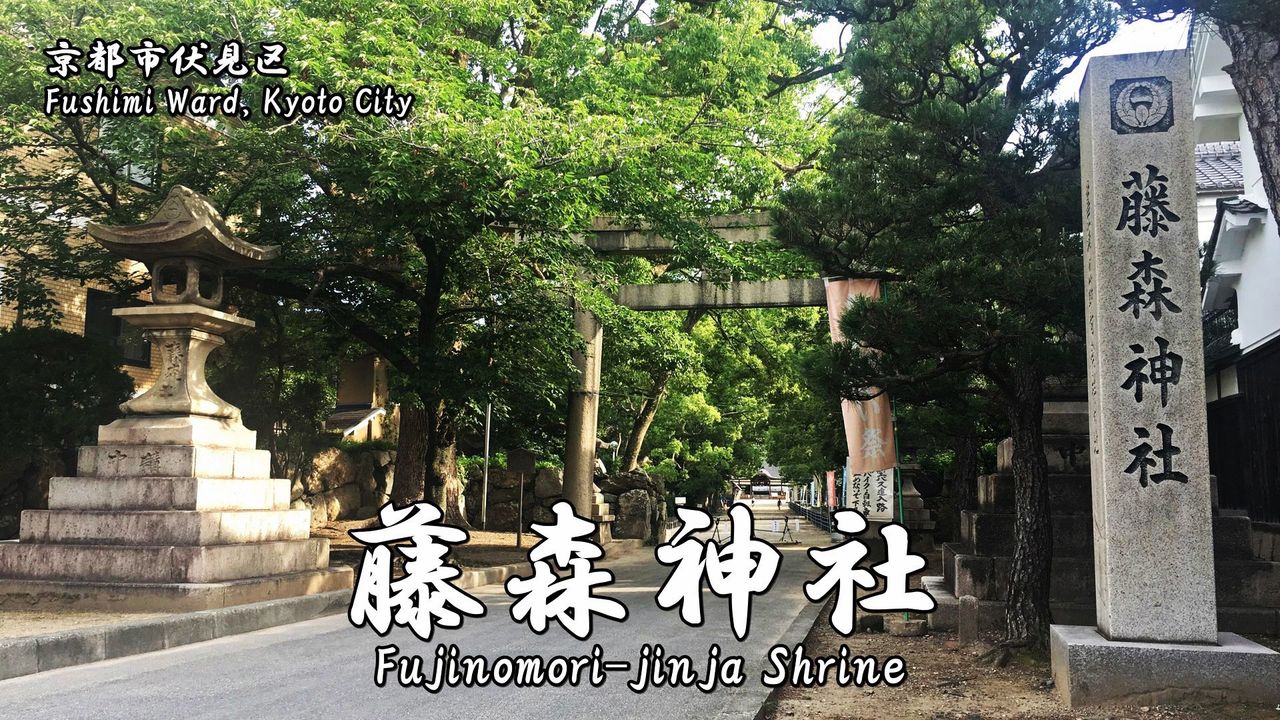Omi-jingu Shrine (近江神宮) is a shrine located in Otsu City, Shiga Prefecture.
This Shinto shrine was founded in 1940 and the main enshrined deity is Emperor Tenji (天智天皇).
Highlight of this shrine is the precincts where ‘Ogura Hyakunin Isshu (traditional Japanese playing card)’ was displayed.
There are a lot of card and monuments inscribed with Ogura Hyakunin Isshu (traditional Japanese playing card) in the precincts of the Shinto shrine.
History of Omi-jingu
Let’s study the history of this shrine with me before introducing of the Omi-jingu.
I think that we can enjoy the sightseeing of this shrine more by learning the history of it. XD
Omi-jingu shrine was founded in 1940 of the Showa period to commemoration the 2600th anniversary of Jinmu Tenno Sokui Kigen (Japan’s starting point of years upon the accession of Emperor Jinmu to the throne).
It is relatively new Shinto shrine.
This place was the capital of Japan called ‘Omi Otsu no Miya (近江大津宮)’ which was transferred from Asuka (Nara) to this area in 667 of the Asuka period.
Main enshrined deity is Emperor Tenji (天智天皇) who is famous by having performed the ‘Taika Reform (大化の改新).’
He has another name called ‘Prince Naka no Oe (中大兄皇子)‘ and this name is more famous for people knowing the Japanese history.
His god name is ‘Amemikoto-hirakasuwake-no-okami (天命開別大神)‘ and has divine favor of leading one’s fate.
He is also famous as the Waka poet who wrote the poem that appears first in the poem collection, “Ogura Hyakunin Isshu” (The Ogura’s Sequence of One Hundred Poems by One Hundred Poets).
「秋の田の 仮庵(かりほ)の庵(いほ)の 苫(とま)をあらみ わが衣手(ころもで)は 露にぬれつつ」
(Waiting for morning in the lookout shed, I watch over the harvest alone. The gaps in the weave of the roof are large, and my kimono, wet from the night mist, never seems to dry.)
This poem which he wrote is very famous.
So, this shrine was also used the stage of Japanese animation “Chihayafuru (ちはやふる),” one of a best-selling manga series in Japan.
Here is surely the sacred place of Karuta (playing card).
Information for visitors
Information
Address:1-1, Jingucho, Otsu-shi, Shiga, 520-0015, Japan
Phone number:+81-77-522-3725
Foundation:1940
Main enshrined deity:Amemikoto-hirakasuwake-no-okami (天命開別大神)
Open
| Precincts | 6:00~18:00 |
| Shrine office | 9:00~16:30 |
| Prayer / Treasure hall | 9:30~16:30 |
Admission fee
| Precincts | free |
| Treasure hall | 300 yen (Adults) / 150 yen (Children) |
Website
Other information
・Please ask temple’s staff where you can take photos and videos.
・Worship method of a shinto shrine and a buddhist temple, please refer to the following article.
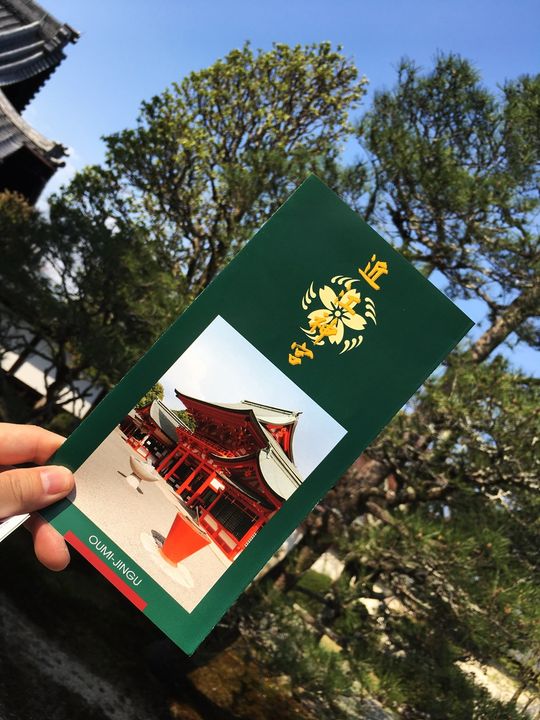
Next, let’s see highlights of this shrine!
Highlights of Omi-jingu
- 一の鳥居:Ichi-no-torii
- 参道:Approach to a shrine
- 二の鳥居:Ni-no-torii
- 歌碑:Monument inscribed with a poem
- 手水舎:Chozu-sha
- 楼門:Ro-mon gate
- 外拝殿:Ge-hai-den hall
- 内拝殿:Uchi-hai-den hall
- 北神門:Hoku-shin-mon gate
- 神楽殿:Kagura-den hall
- 栖松遙拝殿:Seishoyo-haiden
- 車寄せ(自動車清祓所):Kurumayose (Carriage porch)
- 時計館/宝物館*:Homotsu-kan (treasure hall)*
- 漏刻:Rokoku (Water clock)
- 古代火時計:Ancient fire clock
This mark ‘*‘ is a pay area.
一の鳥居:Ichi-no-torii
Ichi-no-torii (First torii) is one of the nation’s registered tangible cultural properties.
●参道:Approach to a shrine
二の鳥居:Ni-no-torii
Ni-no-torii (Second torii) is also one of the nation’s registered tangible cultural properties.
歌碑:Monument inscribed with a poem
In the precincts of this Shinto shrine, there are 12 monuments inscribed with a tanka poem that great poets.
手水舎:Chozu-sha
Chozu-sha is the building for cleaning hands and rinsing mouth.
it is one of the nation’s registered tangible cultural properties.
楼門:Ro-mon gate
Ro-mon gate was built in 1944, but part was lost by arson.
So, it was rebuilt in 1956.
It is one of the nation’s registered tangible cultural properties.
Frames of Ogura Hyakunin Isshu are displayed on the wall of the Ro-mon gate.
外拝殿:Ge-hai-den hall
Ge-hai-den hall is made with one of the modern shrine construction method called the Omi-zukuri style (近江造り).
It is one of the nation’s registered tangible cultural properties.
内拝殿:Nai-hai-den hall
Naihai-den hall is one of the nation’s registered tangible cultural properties.
There is the Hon-den hall (main shrine) at the rear of this building.
北神門:Hoku-shin-mon gate
神楽殿:Kagura-den hall
Kagura-den hall is one of the nation’s registered tangible cultural properties.
At the beginning of every January, Meijin-sen Tournament and Queen-sen Tournament of competitive karuta are held in this building.
栖松遙拝殿:Seishoyo-haiden
Spirit of the Arisugawa-no-Miya family (有栖川宮家) which is one of the royal family is worshiped in this shrine.
車寄せ(自動車清祓所):Kurumayose (Carriage porch)
Kurumayose (Carriage porch) is one of the nation’s registered tangible cultural properties.
The building of Otsu District Court built in 1890 was removed and rebuilt in this place.
時計館/宝物館*:Treasure hall*
This is the Homotsu-kan (tereasure hall).
This building is also the first museum of ‘clock’ in Japan.
It is said that Emperor Tenji (天智天皇) which is the God of this shrine made a water clock for the first time in Japan.
漏刻:Rokoku (Water clock)
This is the Rokoku (漏刻) which is the replica of water clock that is said to have been made by Emperor Tenji (天智天皇).
This clock was dedicated in 1964 by Omega SA of the Swiss clock maker.
We can measure the time by the height of the flowing water of this clock.
古代火時計:Ancient fire clock
This is the replica of ancient fire clock which was used in ancient China 4000 years ago.
This clock was dedicated in 1979 by Rolex SA of the Swiss clock maker.
When we set fire to a thread of this clock, the ball sinker falls every two hours, and sounds.
Video of Omi-jingu
Photos of Omi-jingu
Goshuin of Omi-jingu
How to get to Omi-jingu
Nearest station is Keihan Ishiyama-Sakamoto-Line Omijingu-mae station.
We can also go by bus from JR Otsu station or JR Otsukyo station.
From Osaka Sta. (by train)
Timetable and Route Search (train)
1.Get on the JR Kyoto/Biwako Line from Osaka Station to Yamashina Station and change to the Keihan Keishin Line.
2.Get on the Keihan Keishin Line from Keihan Yamashina Station to Hamaotsu Station and change to the Keihan Ishiyama-Sakamoto Line.
2.Get on the Keihan Ishiyama-Sakamoto Line from Hamaotsu Station to Omijingu-mae Station.
From Namba Sta. (by train)
Timetable and Route Search (train)
1.Get on the Osaka Metro Midosuji Line from Namba Station to Umeda Station and change to the JR Kyoto/Kosei Line.
2.Get on the JR Kyoto/Kosei Line from Osaka Station to Otsukyo Station and change to the Keihan Ishiyama-Sakamoto Line.
3.Get on the Keihan Ishiyama-Sakamoto Line from Ojiyama Station to Omijingu-mae Station.
From Kyoto Sta. (by train)
Timetable and Route Search (train)
1.Get on the JR Biwako Line from Kyoto Station to Zeze Station and change to the Keihan Ishiyama-Sakamoto Line.
2.Get on the Keihan Ishiyama-Sakamoto Line from Zeze Station to Omijingu-mae Station.
From Omijingu-mae station (on foot)
It’s about 10 minutes (500m) on foot.
Get on a bus from JR Otsu Station
Timetable and Route Search (bus)
Please get on a Keihan Bus No.66, 66A (Otsu Sta. [3]) and get off Omijingu-mae.
Bus company:Keihan Bus
Routes/Destination:Route No. 66,66A [Bound for Hieidaira]
Boarding bus stop:Otsu Sta. [3]
Alighting bus stop:Omijingu-Mae
Bus fare:230 yen
Time required:About 25 min
Get on a bus from JR Otsukyo Station
Timetable and Route Search (bus)
Please get on a Keihan Bus No.66, 66A (Otsukyo Sta.) and get off Omijingu-mae.
Bus company:Keihan Bus
Routes/Destination:Route No. 66,66A [Bound for Hieidaira]
Boarding bus stop:Otsukyo Sta.
Alighting bus stop:Omijingu-Mae
Bus fare:210 yen
Time required:About 5 min
Take a taxi
From Kyoto Station:about 5,500 yen (30 minutes)
From Gion-Shijo Station:about 5,000 yen (25 minutes)
From JR Otsu Station:about 2,200 yen (10 minutes)
・Let’s show a taxi driver the following phrase.
・If you want to call a taxi, let’s show the following phrase.
Phone number of taxi dispatch (Kyoto Station)
Phone number of taxi dispatch (Otsu Station)
Hotel search & reservation around Omi-jingu Shrine
How did you like it?
Have a nice trip!

